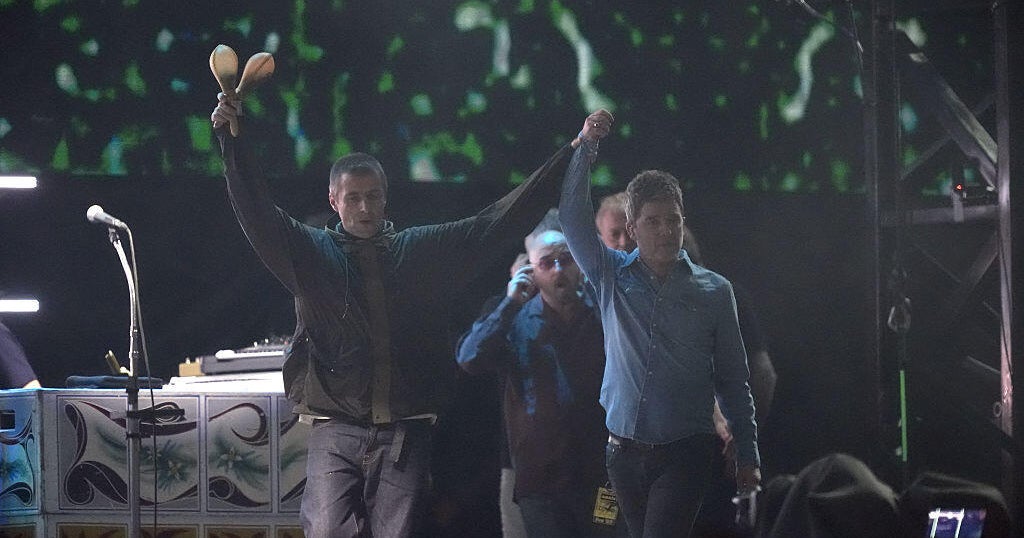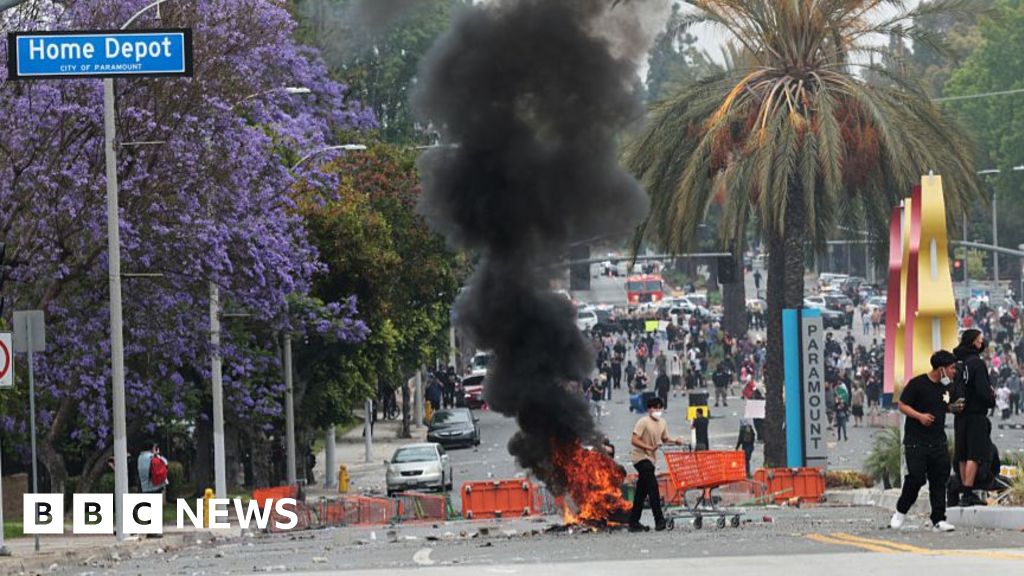OPINION - “[Russian President Vladimir] Putin almost certainly is committed to victory in Ukraine, and his objectives remain mostly unchanged since the beginning of the war: Ukrainian neutrality and a further partition of theUkrainian state. In the absence of a negotiated settlement or, alternatively, robust Western aid, the battlefield outlook probably will continue to slowly trend in Russia’s favor through 2025, though Russian battlefield gains are slowing and continue to come at the expense of high personnel and equipment losses.”
That was an excerpt from the 2025 Worldwide Threat Assessment issued by the Defense Intelligence Agency (DIA) and presented last Thursday to the House Armed Services Subcommittee on Intelligence and Special Operations by Air Force Lt. Gen. Jeffrey Kruse, DIA’s Director.
Kruse said the DIA Assessment is meant “to convey not only what we see as the current threats, but also to illuminate the trends and threats we see going forward that we must address.”
Although the subcommittee hearing covered many subjects, I found some DIA assessments about Russia, China and a few other counties most illuminating and discuss them below.
For example, DIA categorized Russian battlefield losses, saying, “Since the [Ukraine] war’s start, Russia has lost at least 10,000 ground combat vehicles, including more than 3,000 tanks, as well as nearly 250 aircraft and helicopters, and more than 10 naval vessels. Russia has experienced more than 700,000 personnel casualties during the war… [including] more than 170,000 fatalities” in ground forces.
DIA identified that Russian “overusage of aircraft and pilots in combat operations, as well as poor force implementation, probably will strain Russia’s Aerospace Forces’ operations in 2025, but not disrupt the pace of Aerospace Forces employment in the conflict. These forces have demonstrated varying degrees of proficiency and capability in Ukraine, leading to both substantial losses of equipment and veteran personnel, as well as the development of new tactics for weapons employments, such as glide bombs.”
Nonetheless, according to the DIA Assessment, “Although Putin and his military leaders probably would prefer more rapid battlefield gains, Moscow seems comfortable with the current cost of its slow advances, calculating they can steadily drain Ukraine’s resources and will, and outlast the West’s support for Ukraine.”
DIA then projected that “Russia’s conventional capabilities to deter, fight, or militarily compete with NATO are likely to be degraded for at least the next three years as the majority of all combat-capable Russian units are committed to the war in Ukraine. Russia faces tradeoffs between modernizing weapons and resupplying its forces in Ukraine, and Russia’s defense
industry is giving priority to refurbishing its equipment and existing platforms ahead of producing new or modernized weapons systems.”
In 2025, according to DIA, “Russia plans to spend at least $150 billion on defense- and security-related expenditures, which is an inflation-adjusted increase of 19 percent from 2024 and will constitute approximately 40 percent of Russia’s federal budget.”
As a result, “Russia is experiencing labor shortages in the [overall] economy, which along with sanctions, are driving up costs for its defense industry. These rising defense production costs probably will hamper Russia’s long-term modernization efforts, particularly for producing advanced equipment,” according to DIA.
What national security news are you missing today? Get full access to your own national security daily brief by upgrading to Subscriber+Member status.
Learning lessons
However, the DIA assessment also suggested that the Russians – along with the U.S. and NATO countries — are learning new tactics from the Ukraine war.
For example, DIA said, “Russia is employing EW (electronic warfare) in offensive and defensive operations to disrupt Ukraine’s communications and weapons guidance. Russia designs its EW capabilities specifically to counter Western-supplied technologies. Additionally, Russia’s use of UAVs (unmanned air vehicles, drones) in the conflict has expanded dramatically as these systems have proven to be cost-effective tools to detect enemy movements, provide artillery targeting assistance, and conduct short- and long-range strikes.”
And while President Trump has made repeated calls for a ceasefire in the Ukraine war, the DIA said that “Russia is targeting critical Ukraine infrastructure with a combination of one-way attack UAVs and long-range missiles to degrade its national will to fight,” adding that “Russia is likely to continue its strategy of attrition, focused on degrading Ukraine’s ability and will to resist through 2025, and allowing Russia to impose its preferred terms in any future negotiated settlement.”
In the nuclear field, DIA noted, “Russia is expanding its nuclear forces by adding new capabilities, including nuclear air-to-air missiles and novel nuclear systems. Russia probably maintains a nuclear stockpile of about 1,550 deployed strategic warheads and up to 2,000 non-strategic warheads. Russia is expanding its nuclear posture to Belarus by establishing missile and nuclear-capable aircraft capabilities, renovating a nuclear weapons storage site, and training Belarusian crews to handle tactical nuclear weapons.”
Although, as DIA pointed out, “Throughout the Russia-Ukraine conflict, Russia has used nuclear-related rhetoric,” it also concluded that “Russia is very unlikely to use nuclear weapons in the conflict unless Russian leadership judged it faced an existential threat to the regime.”
The view of China
To me, DIA’s most interesting views of China relate first to Taiwan and second to its military, the People’s Liberation Army (PLA).
On Taiwan, DIA said, “China is likely to continue its campaign of diplomatic, information, military, and economic pressure on Taiwan to advance its long-term objective of unification with Taiwan, deter any move by Taiwan toward independence, and test the United States’ commitment to Taiwan’s defense.”
And while China has military options such air and maritime blockades, the seizure of Taiwan’s smaller outlying islands, joint firepower strikes, and even an amphibious invasion of Taiwan, DIA said, “China appears willing to defer seizing Taiwan by force as long as it calculatesunification ultimately can be negotiated. The costs of forcing unification continue to outweigh the benefits, and its stated redlines have not been crossed by Taiwan or its partners and allies.”
Meanwhile, according to DIA, “China is improving PLA systems to operate further from China for longer periods and establishing a more robust overseas logistics and basing infrastructure to sustain deployments at greater distances, efforts that can potentially threaten U.S. global operations or international commerce during a conflict.”
One China downside, described by DIA, was that “President Xi continues to publicly express concern about disloyalty and corruption in the PLA’s ranks. In 2024, a long-serving admiral in charge of enforcing loyalty and ideological compliance across the PLA was removed and investigated for corruption. The dismissal resembles the abrupt removal in 2023 of China’s defense minister and senior PLA Rocket Force officers, reportedly because of corruption surrounding weapons procurement and nuclear modernization. In mid-March, press outlets identified a vice-chairman of China’s Military Commission—Gen He Weidong—as another senior target of anti-corruption investigations.”
From AI to unmanned systems, experts are gathering at The Cipher Brief’s NatSecEDGE conference June 5-6 in Austin, TX to talk about the future of war and national security. Be a part of the conversation.
The Iran assessment
Since U.S. negotiations with Iran on its nuclear program continue, the DIA’s analysis of that situation is worth noting as well.
“Iran almost certainly is not producing nuclear weapons,” DIA said, “but Iran has undertaken activities in recent years that better position it to produce them, if it chooses to do so.” Since 2019, after then-President Trump pulled out of the Obama-signed Joint Comprehensive Plan of Action (JCPOA) agreement, Iran has increased “the size and enrichment levels of its uranium stockpile, producing small quantities of uranium metal, restricting International Atomic Energy Agency monitoring to pre-JCPOA levels, and expanding uranium enrichment at its Fordow Fuel Enrichment Plant,” DIA said, adding, “These actions reduce the time required to produce sufficient weapons-grade uranium for a first nuclear device to probably less than one week.”
But, DIA surmises, “Iran’s senior leaders probably have not decided to restart its pre-2003 nuclear weapons program, but since April 2025, Iranian officials have threatened to revisit their nuclear doctrine if its nuclear facilities were attacked.”
One more item is worth mentioning here.
The DIA said, “The terrorist threat to the U.S. Homeland remains dynamic and diffuse as terrorist groups decentralize attack plotting efforts.” The DIA then specifically mentioned the terrorist group Islamic State of Iraq and Syria, better known as ISIS.
“Over the next year,” DIA said, “ISIS probably will try to conduct high-profile attacks in the West, similar to the group’s attacks in France and Belgium approximately a decade ago. ISIS’s affiliates in Afghanistan and Al-Qaeda’s affiliate in Yemen probably pose the greatest threat to the United States…In spring 2024, eight individuals with potential ties to ISIS were arrested in the United States, having entered through the U.S. southern border, which shows the threat of individuals with potential ties to terrorist groups transiting the southern border.”
I focus on this item because over the years President Trump has insisted, as he did as recently as last Wednesday in Qatar, "We defeated 100% of the ISIS caliphate in just a very short period of time, totally different from what I was told in Washington D.C. by a bunch of frickin' losers."
Given the Trump administration firing of the two top officials at the National Intelligence Council for their report that contradicted the Trump view of Venezuelan gangs, I hope DIA Director Lt. Gen. Kruse’s job is not endangered by his reporting that ISIS is still very active.
The Cipher Brief is committed to publishing a range of perspectives on national security issues submitted by deeply experienced national security professionals. Opinions expressed are those of the author and do not represent the views or opinions of The Cipher Brief.
Have a perspective to share based on your experience in the national security field? Send it to Editor@thecipherbrief.com for publication consideration.
Read more expert-driven national security insights, perspective and analysis in The Cipher Brief

 1 month ago
11
1 month ago
11










 English (US) ·
English (US) ·